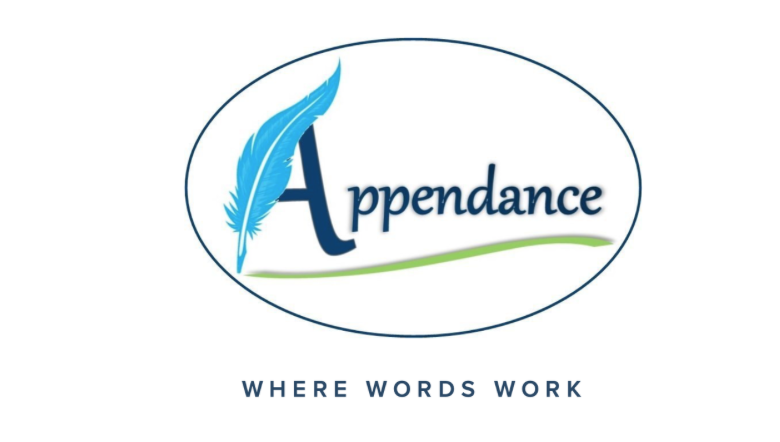How stories work
And that’s the story of how I became a person who teaches other people how to communicate at work!
See, it’s not the whole story of who I am or my childhood or all the things I have ever done and cared about. A story is a framework. A shape. It starts at a particular point and ends at another with some complication along the way. But it can’t contain everything. The way it works is by giving some details and filtering out others.
What do you remember from my story? What stands out to you? If you had to retell it to someone else, what would you say?
I’m guessing your summary would be something like this:
Jenny went to a barbecue that she didn’t want to go to and met a lady who helped her get into consulting, which changed her life by giving her the extra money to buy a house.
And that summary would be enough! You would have retained the entire point of the story in your one sentence summary!
But if I had just said that–just that one sentence–you probably wouldn’t remember anything. Your summary would be something like “Jenny met a lady who changed her life or something.”
When we communicate, there’s a gap between the content the writer or speaker—called the “sender”--shares and what the audience retains. The reader/listener–called the “receiver”--can’t comprehend 100% of what the sender says. The gap is because the receiver has their own thoughts and experiences that interact with the content being sent. The receiver doesn’t read or listen to every word because some of those words will trigger thoughts in the receiver’s brain. They will follow those thoughts for a second or a few minutes or maybe longer before coming back and re-engaging with the sender’s content. If the content is written, the receiver may go back and read what they zoned out on. But they might not. And if the receiver is listening, then the content may be lost forever.
Since no message will ever be exchanged at 100%, the goal is to have the receiver grasp maybe 85% of the message content.
That means the sender will *always* have to send more content than the receiver will get. The email will be longer than what gets read. The presentation will be longer than what the participants retain.
But the way that we get to that 85% is by presenting content as a story so that the receiver’s brain can hold on to the most valuable information.
The key features of a story are that it starts at a relevant moment, just before the important stuff happens.
For fairy tales, we use the phrase “Once upon a time”, but at work, we might point to a particular day, project, or person:
“This one time”
“While I was working on x”
“Person contacted me and…”
These kinds of phrases signal the beginning of a story because they locate us in time, place, or in relation to a person or situation. Essentially, they mark the moment before something happened.
Choosing this moment is critical. No one wants a story that starts with “When I was born” because that’s going back waaaaay too far in most cases, and is most likely totally irrelevant to work.
If the moment is too far before the action, people get bored.
But you also have to make sure that the starting moment provides enough details–who is involved, what are you working on, what is happening in the world (stories set in 2025 are much different than those set in 2000 which are much different than those set in 1975–just in terms of phones let alone other world changes)--so that the action will make sense.
And also, you can’t have so many details that your receiver zones out.
In some stories it will be relevant that the floor was carpeted. In other stories, it won’t be relevant at all. You have to select which details to share based on what will affect the action of the story. Skip details that don’t matter to the central purpose or action.
For example, in my story above, I include the details that I had finished my PhD in English and that I had taught numerous classes in the English department. These are relevant to where I am in my life and how I was feeling as I went to the barbecue that summer and they relate to the other people in the story and the outcome.
But I left out a million other details about who I am and why I am the way I am. For example, I didn’t include in the story that my first job was at a bookstore or that my first job out of college was in publishing. While these experiences are relevant to my work history and speak to my lifetime obsession with language and books, those details are not directly related to this particular story and it’s outcome.
When you choose the beginning, you are isolating a moment in time and providing relevant details that will come into play in the rest of the story.
You will also have to choose the ending. Usually, the ending is the point or purpose, the reason you wanted to tell the story in the first place.
But remember, the ending is also an arbitrary stopping point. You have to decide where it ends–because your life kept going beyond that moment to flow into other moments.
A story is a crafted selection of details that starts at a particular moment and ends at a particular moment. Even as your life moves constantly from moment to moment.
The middle of the story is whatever challenges, complications, problems, difficulties, or even just additional hurdles you faced while trying to reach the ending point.
Now, if we take story structure as the most useful tool for transferring information into human memories, then we can apply this to anything, including our writing at work to make the business we transact memorable to our coworkers, our clients, our vendor partners, and whoever else we might communicate with.
The idea is that an email can use story structure. You identify the starting point–the relevant time/place/project/client–that relates to the desired ending point–the result or outcome that you want your email to accomplish. And then you fill in the middle with the steps, details, complications, and instructions about how the receiver can go from the starting point (the context) to the ending point (the outcome).
Practice telling stories at work. You probably tell stories in your personal life–to your friends and family, even if it’s just a “Listen to what happened to me today!” thing. But stories help us make sense of the world and discern the ongoing stream of information into relevant pieces.
You can help your receivers retain more work-related information by using story structure. All you have to do is practice! Choose the desired ending: outcome or result. Identify the appropriate beginning: the place, time, project, client, or person or some intersection of all of those that connects to the target ending. Then identify the steps, complications, challenges, or instructions for how your receiver can move from the starting point to the ending point. Remove any details that don’t help the receiver understand and act on the intended ending.
Once you start practicing, you’ll notice story patterns every where and will likely keep improving in your ability to use this basic framework to share information with others at work.


